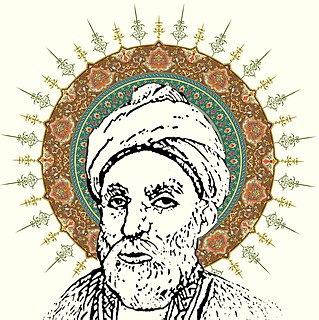Related Research Articles

The Ilkhanate, also spelled Il-khanate, known to the Mongols as Hülegü Ulus, was a khanate established from the southwestern sector of the Mongol Empire. The Ilkhanid realm, officially known as Iranzamin, was ruled by the Mongol House of Hulagu. Hulagu Khan, the son of Tolui and grandson of Genghis Khan, inherited the Middle Eastern part of the Mongol Empire after his brother Möngke Khan died in 1260. Its core territory lies in what is now part of the countries of Iran, Azerbaijan, and Turkey. At its greatest extent, the Ilkhanate also included parts of modern Iraq, Syria, Armenia, Georgia, Afghanistan, Turkmenistan, Pakistan, part of modern Dagestan, and part of modern Tajikistan. Later Ilkhanate rulers, beginning with Ghazan in 1295, converted to Islam. In the 1330s, the Ilkhanate was ravaged by the Black Death. Its last khan Abu Sa'id died in 1335, after which the khanate disintegrated. The Ilkhanid rulers, although of non-Iranian origin, tried to advertise their authority by tying themselves to the Iranian past, and they recruited historians in order to present the Mongols as heirs to the Sasanians of pre-Islamic Iran.
This is a timeline of major events in the Muslim world from 1400 AD to 1499 AD.

The Muzaffarid dynasty was a Muslim dynasty which came to power in Iran following the breakup of the Ilkhanate in the 14th century. At their zenith, they ruled a kingdom comprising Iranian Azerbaijan, Central Persia, and Persian Iraq. The Muzaffarids were known for their support of Arabic literature. Shah Shoja was a poet and wrote in both Arabic and Persian and was said to be capable of memorizing eight verses of Arabic poetry after hearing them read once. While the Muzaffarid ruler of Kirman, Shah Yahya, commissioned the scholar Junyad bin Mahmud Al-Umari to compile an anthology of Arabic poetry and prose for him

The Kart dynasty, also known as the Kartids, was a Sunni Muslim dynasty of Tajik origin closely related to the Ghurids, that ruled over a large part of Khorasan during the 13th and 14th centuries. Ruling from their capital at Herat and central Khorasan in the Bamyan, they were at first subordinates of Sultan Abul-Fateh Ghiyāṣ-ud-din Muhammad bin Sām, Sultan of the Ghurid Empire, to whom they were related, and then as vassal princes within the Mongol Empire. Upon the fragmentation of the Ilkhanate in 1335, Mu'izz-uddin Husayn ibn Ghiyath-uddin worked to expand his principality. The death of Husayn b. Ghiyath-uddin in 1370 and the invasion of Timur in 1381, ended the Kart dynasty's ambitions.

The Sarbadars were a mixture of religious dervishes and secular rulers that came to rule over part of western Khurasan in the midst of the disintegration of the Mongol Ilkhanate in the mid-14th century. Centered in their capital of Sabzavar, they continued their reign until Khwaja 'Ali-yi Mu'ayyad submitted to Timur in 1381, and were one of the few groups that managed to mostly avoid Timur's famous brutality.
Muhammad Khan was a claimant to the throne of the Ilkhanate.

Togha Temür, also known as Taghaytimur, was a claimant to the throne of the Ilkhanate in the mid-14th century. Of the many individuals who attempted to become Ilkhan after the death of Abu Sa'id, Togha Temür was the only one who hailed from eastern Iran, and was the last major candidate who was of the house of Genghis Khan. His base of power was Gurgan and western Khurasan. His name "Togoy Tomor" means "Bowl/Pot Iron" in the Mongolian language.
Amir Vali was the ruler of Astarabad and parts of Mazandaran from 1356 until 1366, and again from c. 1374 until 1384. His relatively long reign was dominated by conflict with the Sarbadars and the Jalayirids, and ended only upon the arrival of Timur into eastern Persia.
Muhammad Aytimur was the leader of the Sarbadars of Sabzewar from 1343 until his death.
Wajih ad-Din Mas'ud was the leader of the Sarbadars of Sabzewar from 1338-1343 until his death. Under his rule, the Sarbadar state developed its characteristic dual nature as both a secular and radical Shi'i state.
Kulū Isfandiyār was the leader of the Sarbadars of Sabzewar from 1346 until around 1347.
Khwaja Shams al-Din 'Ali was the leader of the Sarbadars of Sabzewar from 1348 until his death.
Zahir al-Din Karawi was the leader of the Sarbadars of Sabzewar from 1356 to 1359.
Haidar Qassāb was the head of the Sarbadars of Sabzewar During 1356.
Lutf Allah was the leader of the Sarbadars of Sabzewar from 1356 until his death.
Zahir al-Din may refer to:
Karawi is an Arabic surname. Notable people with the surname include:
The Battle of Zava was fought on July 18, 1342 between the armies of the Sarbadars and the Kartids. Since their appearance as a political force in Khorasan, the Sarbadars had fought to expand their influence in north-eastern Iran and defend against the forces of the claiming Ilkhan Togha Temür who sought to regain Khorasan. Mu'izz al-Din Husain, the chief of the Kartids of Herat, recognized Togha Temur's overlordship, and when the Sarbadars secured their hold on Khorasan they sought to eliminate the Kartid threat to the east.

Ibn Yamin was a Persian poet who served under the Ilkhanate, Sarbadars, and Kartids.
References
- Roemer, H. R. "The Jalayirids, Muzaffarids and Sarbadars." The Cambridge History of Iran Volume 6: The Timurid and Safavid Periods. Edited by Peter Jackson. New York: Cambridge University Press, 1986. ISBN 0-521-20094-6
- Smith, Jr., John Masson. The History of the Sarbadar Dynasty 1336-1381 A.D. and Its Sources. The Hague: Mouton, 1970. ISBN 90-279-1714-0